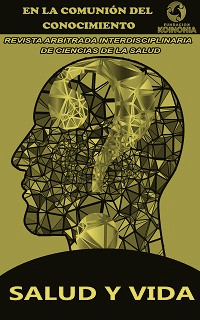Nursing care in the rapid intubation sequence of patients with acute respiratory distress
DOI:
https://doi.org/10.35381/s.v.v7i2.2854Keywords:
Respiratory Insufficiency, Respiration Disorders, Respiratory Tract Diseases, (Source: DeCS)Abstract
Objective: to analyze nursing care in the rapid intubation sequence of patients with acute respiratory distress. Method: Documentary descriptive. Results and Conclusion: Respiratory distress syndrome continues to be among the pathological entities with high mortality rates and among the leading causes for requiring endotracheal intubation in critically ill patients, due to the fact that its pathophysiology is not based solely on respiratory damage, but also on the collateral affectation of different organs and systems, ARDS does not distinguish between ages and despite its higher incidence in men than in women, the sequelae it causes in the short, medium and long term directly affect the quality of life of all those who experience it. have suffered, for this reason it is of great importance to continue researching, updating and contributing with knowledge of scientific bases that can improve their treatment, as well as anticipate their secondary appearance to any pathology.
Downloads
References
Shelhamer MC, Wesson PD, Solari IL, et al. Prone Positioning in Moderate to Severe Acute Respiratory Distress Syndrome Due to COVID-19: A Cohort Study and Analysis of Physiology. J Intensive Care Med. 2021;36(2):241-252. doi:10.1177/0885066620980399
Chao TN, Harbison SP, Braslow BM, et al. Outcomes After Tracheostomy in COVID-19 Patients. Ann Surg. 2020;272(3):e181-e186. doi:10.1097/SLA.0000000000004166
Cotton SA, McGuire WC, Hussain A, et al. Proning in COVID-19 Acute Respiratory Distress Syndrome: Role of Paralytics. Crit Care Explor. 2022;4(2):e0646. doi:10.1097/CCE.0000000000000646
Team V, Team L, Jones A, Teede H, Weller CD. Pressure Injury Prevention in COVID-19 Patients With Acute Respiratory Distress Syndrome. Front Med (Lausanne). 2021;7:558696. doi:10.3389/fmed.2020.558696
Farhadi N, Varpaei HA, Fattah Ghazi S, Amoozadeh L, Mohammadi M. Deciding When to Intubate a COVID-19 Patient. Anesth Pain Med. 2022;12(3):e123350. doi:10.5812/aapm-123350
Goto T, Goto Y, Hagiwara Y, Okamoto H, Watase H, Hasegawa K. Advancing emergency airway management practice and research. Acute Med Surg. 2019;6(4):336-351. doi:10.1002/ams2.428
Vera, M., Kattan, E., & Bravo, S. Manejo de la vía aérea en la Unidad de Cuidados Intensivos [Airway management in the Intensive Care Unit]. Revista Chilena de Medicina Intensiva, 2022; 36(2). Recuperado de https://www.medicina-intensiva.cl/revista/articulo.php?id=7
Yoon U, Mojica J, Wiltshire M, et al. Emergent airway management outside of the operating room - a retrospective review of patient characteristics, complications and ICU stay. BMC Anesthesiol. 2019;19(1):220. Published 2019 Dec 3. doi:10.1186/s12871-019-0894-4
Gragossian A, Siuba MT. Acute Respiratory Distress Syndrome. Emerg Med Clin North Am. 2022;40(3):459-472. doi:10.1016/j.emc.2022.05.002
Law JA, Duggan LV, Asselin M, et al. Canadian Airway Focus Group updated consensus-based recommendations for management of the difficult airway: part 1. Difficult airway management encountered in an unconscious patient. Mise à jour des lignes directrices consensuelles pour la prise en charge des voies aériennes difficiles du Canadian Airway Focus Group: 1ère partie. Prise en charge de voies aériennes difficiles chez un patient inconscient. Can J Anaesth. 2021;68(9):1373-1404. doi:10.1007/s12630-021-02007-0
Law JA, Duggan LV, Asselin M, et al. Canadian Airway Focus Group updated consensus-based recommendations for management of the difficult airway: part 1. Difficult airway management encountered in an unconscious patient. Mise à jour des lignes directrices consensuelles pour la prise en charge des voies aériennes difficiles du Canadian Airway Focus Group: 1ère partie. Prise en charge de voies aériennes difficiles chez un patient inconscient. Can J Anaesth. 2021;68(9):1373-1404. doi:10.1007/s12630-021-02007-0
Mart MF, Ware LB. The long-lasting effects of the acute respiratory distress syndrome. Expert Rev Respir Med. 2020;14(6):577-586. doi:10.1080/17476348.2020.1743182
Christman JW, Karpurapu M, Pei D. Can acute respiratory distress syndrome be treated?. Future Med Chem. 2021;13(8):687-690. doi:10.4155/fmc-2021-0014
Taboada M, Rodríguez N, Riveiro V, et al. Short-term outcomes of 50 patients with acute respiratory distress by COVID-19 where prone positioning was used outside the ICU. J Clin Anesth. 2020;67:110028. doi:10.1016/j.jclinane.2020.110028
Kaissi JE, Jebbar N, Diai A, Zinebi A, Laoutid J. Preventing Acute Respiratory Distress Syndrome (ARDS) and to avoiding intubation in patients with COVID-19: an experience from a reanimation service in Morocco. Pan Afr Med J. 2020;37(Suppl 1):6. Published 2020 Sep 10. doi:10.11604/pamj.supp.2020.37.6.22747
Published
How to Cite
Issue
Section
License
Copyright (c) 2023 Narcisa Estefanía Morocho-Espinoza, Neris Marina Ortega-Guevara, Rebeca Alejandra Neira-Huera, Rosa-del-Pilar López-Ruales

This work is licensed under a Creative Commons Attribution-NonCommercial-ShareAlike 4.0 International License.
CC BY-NC-SA : Esta licencia permite a los reutilizadores distribuir, remezclar, adaptar y construir sobre el material en cualquier medio o formato solo con fines no comerciales, y solo siempre y cuando se dé la atribución al creador. Si remezcla, adapta o construye sobre el material, debe licenciar el material modificado bajo términos idénticos.
OAI-PMH: https://fundacionkoinonia.com.ve/ojs/index.php/saludyvida/oai.









